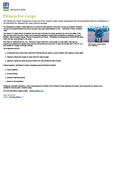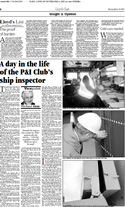Hatch Cover Testing and Marine Surveying Article Library
Class Instrumentation Ltd would like to introduce our Article Library. This library is collated around topics relevant to our customers, such as ultrasonic testing information, and we welcome any suggestions for additions. All of the articles shown here are already freely available on the internet.
The purpose of this library is to provide a source of ultrasonic testing information which is additional to that available from regulatory, advisory, and consultative organisations. These articles are for reference and interest only and do not necessarily reflect the opinion of Class Instrumentation Ltd.
No guarantee of accuracy is given and users of this information are to be responsible for satisfying themselves that the information is relevant and suitable for the purposes to which it is applied. In no circumstances whatsoever shall the Association be liable to any person whatsoever for any loss or damage whensoever or howsoever arising out of or in connection with the supply (including negligent supply) or use of information.
The content of this library does not constitute legal advice and should not be construed as such
The Standard P&I Club produces a variety of publications for the benefit of shipowners and their brokers. The Standard Bulletin provides up-to-date information on activities at the club, in the P&I and in shipping markets and maritime law. This special edition released in February 2007 covers a range of cargo related articles.
Standard Bulletin
26th February 2007
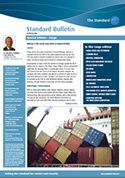
Page 6 of Issue 82 of Signals Newsletter provides an article of ultrasonic hatchcover testing.
Ensuring a ship’s hatch covers are weathertight is an essential aspect of exercising due diligence to make a ship seaworthy and cargoworthy. This requires an appropriate method of testing to enable any potential problems or defects to be identified and resolved. In this article Walter Vervloesem of IMCS Group, and training instructor for SDTIMCS Ultrasonic Hatch Cover Tightness Testing Training course, compares the principal methods of testing hatch cover weathertightness.
Walter Vervloesem
Page 6 Signals Newsletter North of England P&I Association
January 2011
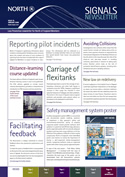
This help sheet was enclosed with the April 2010 issue of Signals Newsletter.
Proper maintenance of hatch covers is esential if they are to be operated effeciently and kept weathertight. However, hatch covers can be complex pieces of equipment and maintenance is adjustment requires knowledge and experience. North has already publisheda loss prevention guide Hatch Cover Maintenance and Operation as well as a loss-prevention briefing to assist seafarers with this task. To provide further help a laminated help sheet is included with this issue of Signals. The aim is that the sheet will be readily available for use on deck and provide a guide for inspection. This wouold help identify problems before they become a serious threat and alert the maintenance team to intervene as soon as possible. It also provides an illustrated guide to common problems associated with sealing arrangments.
Supplement of Signals Newsletter Issue 79
April 2010
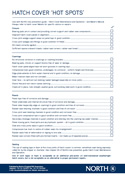
This supplement was made available to North of England P&I Members in the 58th Edition of their Newsletter Signals. It offers insight into surveying hatch covers and the top ten hatch defects.“The Association may periodically require a ship’s hatch covers to be tested for weathertightness. Similar surveys are also often required by classification societies, and representatives of cargo shippers, particularly where the cargo is sensitive to water damage. These surveys may be done by the traditional hose test or using the more modern method of ultrasonic leak detection.”
David Byrne
Signals Newsletter Supplement North of England P&I Association
January 2005
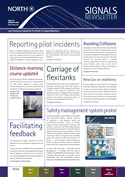
An article on page 9 of Signals on the fines imposed by Turkish environmental authorities for discharges from ships which is calculated on a set amount according to the vessel’s tonnage.Omur Marine, the Association’s correspondent in Istanbul, has recently issued advice to Members as to how to avoid pollution fines, as follows.
“No deck washing or hatch-cover hose testing should be performed in port or at anchorage. Ultrasonic testing of hatches can be carried out in Turkish ports. Members are advised to notify the Association of any need for hatch testing as far in advance as possible so that the necessary ultrasonic testing can be arranged.”
Omur Marine Limited
Page 9 Signals Newsletter North of England P&I Association
January 2008
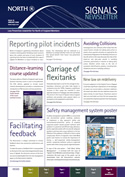
Cargo hatch covers are important for the safety of the vessel, crew and cargo. Ensuring weathertight integrity while at sea is the primary objective of hatch covers. A number of reported casualties are related to the loss of weather tight integrity due to the collapse of hatch cover steel structures or failure of securing and locking devices.
Sonke Pohl
DNV Bulk Carrier Update No 1 2010
25th June 2010
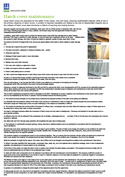
Ask anyone in the marine business which item of shipboard equipment they think causes the largest and most frequent claims and the chances are they will get the answer right hatch covers. The level of losses from defective or poorly maintained hatch covers shows no signs of diminishing. This briefing aims to remind Members that useful improvements can be achieved without huge cost it is often just a case of applying good practice and decent maintenance.
David Byrne
Loss Prevention Briefing North of England P&I Association

Ensuring a ship’s hatch covers are weathertight is an essential aspect of exercising due diligence to make a ship cargoworthy that may not be covered by routine classification society inspections. This requires an appropriate method of testing to enable any potential problems or defects to be identified and resolved.In this briefing Walter Vervloesem of IMCS Group, and training instructor for IMCS Group Ultrasonic Hatch Cover Tightness Testing Training course, compares the principal methods of testing hatch cover weathertightness and compares hose testing to ultrasonic tightness testing.
Walter Vervloesem
Loss Prevention Briefing North of England P&I Association
January 2011
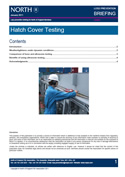
The overall objective of the Classification Societies is to ensure the safe operation of the ship in all sea and weather conditions. As long as the seaworthiness of the ship is ensured, limited attention has been given to the cargo by class. Hatch covers on bulk carriers have two basic functions: In open position hatch covers provide access to the holds for loading and discharge of cargo. In closed position hatch covers seal the hatchway in a weather-tight condition when at sea, meaning that in any condition, there should be no leakage into the cargo hold. This is in compliance with the Load Line Convention. Approximately a third of all P&I claims are cargo-related. Numerous of these cases are related to ingress of seawater via the hatch covers of dry cargo vessels.
Harald Olav
DNV Bulk Carrier Update No 2 2007
Updated 4th February 2007
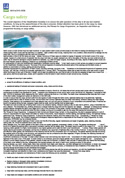
The UK Clubs Analysis of Major Claims is a detailed examination of the UK Club’s claims over US$100,000. The report was first published in 1991 and the most recent in 1997, which examined some 3,700 major claims worth US$1.75bn incurred over the ten years from 1st Jan 1987 to 1st Jan 1997. The increased time span allows us for the first time to plot the trends as well as the actual frequency and value of the five principal categories of the Club’s claims; Cargo, Personal Injury, Property, Pollution and Collision. The UK P&I Club’s analysis of major claims has, in the years since the publication of the first analysis in 1991, become an industry standard from which not only the Club’s Members but also the shipping authorities such as IMO, the maritime safety and coastguard agencies and the press draw many of their statistics. Nevertheless, the primary aim of reviewing the collective claims experience of the Club’s Members is to provide a base of information from which the Members themselves may apply risk management principles to reduce their exposure to claims.Carrie Greenway
UK P&I Club
1st January 1997
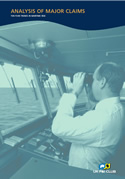
Hatch covers leak for a variety of reasons, but mainly because of poor maintenance or failure to close them properly. Leaking or badly maintained hatch covers can lead to more serious consequences than wet cargo flooding, accelerated corrosion or even the loss of the ship. The following is covered in this guide: Hatch Covers and their Function, Basic Advice, Common False Beliefs, Leakage Problems, Leak Detection Tests, Monitoring & Inspection, Maintenance & Repair, Heavy Weather Precautions, Safety when working with Hatch Covers, Procedures to open and close and Condition Assessment Forms.Lloyds Register and The Standard
May 2002
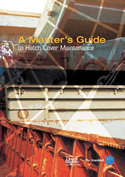
This review is a reference document allowing the reader to source a wide range of data relating to the P&I Market.
Key findings of the Mid-Term Review include:
- P&I clubs have seen a collective investment return of US$619 million for the year ending 20 February 2010, compared with a more than US$800 million loss in the 2008/09 policy year.
- ‘Pool’ claims slowed during 2008 and this trend appeared to continue into 2009 which although higher than the previous year is below the levels of 2006 and 2007.
- A welcome increase in investment income still remains no substitute for underwriting discipline.
Aon Limited
2010
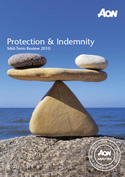
A copy of the reports requested by Steamship Mutual after the survey of a ship. The Club expects surveyors to report in a two-stage process. A Summary Report is to be submitted within 24 hours of attending the vessel that is the subject of the survey. The Formal Report should be submitted within 14 days of attendance. A vessel’s cargoworthiness is of great concern to the Club and further guidance on determining cargoworthiness is set out in this document on dry cargo.Steamship Insurance Management Services Limited.
Loss Prevention Version 1
November 2006
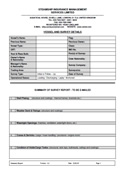
This report explains in detail the nature of the ship inspection process, and records the overall picture presented from an analysis of the data in the inspectors’ reports. It also provides an analysis of the findings from the condition survey programme dating back to 1990.
UK P&I Club based on a 1994 study by the Institute of Maritime Law
August 1995
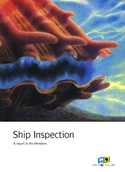
Dedicated to safe ships and clean seas, the International Association of Classification Societies Ltd (IACS) makes a unique contribution to maritime safety and regulation through technical support, compliance verification and research and development. More than 90% of the world’s cargo carrying tonnage is covered by the classification design, construction and through-life compliance rules and standards set by the eleven Member Societies of IACS. IACS produces recommendations and guidelines related to adopted resolutions that are not necessarily matters of class but which IACS considers would be helpful to offer some advice to the marine industry. These documents cover a wide range of issues.
These are Regulation 14 &15 which cover the topic of Hatch Covers.
Recommendation 14
IACS
Revised in 1996
Corrected June 2000
Revised 2005
Corrected October 2005
Recommendation 15
IACS
1986 1986
Revised in 1989
Revised in 1997
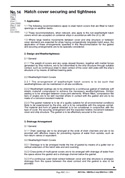
The Maritime Safety Committee issued the MSC/Circ.1071 to provide Guidelines for bulk carrier hatch cover surveys and owner’s inspections and maintenance.The Guidelines contain design considerations on the strength of securing devices of hatch covers and the detailed requirements on maintenance programme and surveys for hatch covers and hatch opening, closing, securing and sealing systems. Shipowners, managers, operators, masters and surveyors are recommended to follow the Guidelines to implement the maintenance programme and survey requirements.International Maritime Organization
MSC/Circ. 1071
13 June 2003
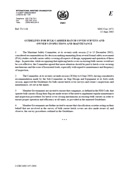
An article on cargo hatch sealing on page 16 of November 2003 The Swedish Club Letter“A claim that frequently appears for the Club is damaged cargo due to ingress of water through the hatch covers rubber seals. This is not necessarily a problem of seaworthiness but definitely one to do with cargoworthiness. The objective of this article is not to address all possible aspects of hatch cover sealing properties and how to rectify them, but to give some simple means for the crew to assure that the covers are in a satisfactory condition”.
Kjell Augustin
The Swedish Club Letter
November 2003
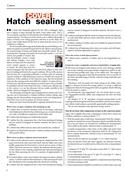
Questions about the carriage of general cargo (steel pipes, plates, coils, project cargo, paper pulp, etc.) on ships classed as container ships have been raised by several of the club’s members.
Their questions include whether P&I cargo cover continues as normal. At first sight, the issue would not appear to be too complex; however, there are sometimes some important issues to consider. This edition of Standard Cargo sets out the steps that the club as a third-party liability insurer believes the ship-owner should consider before carrying general cargo on a container ship.
Chris Spencer
Charles Taylor Consulting
The Standard Standard Cargo
August 2010
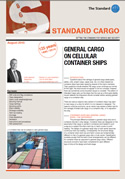
World Leading Designers and Manufacturers

We are proud to be British based designers and manufacturers of world-leading ultrasonic water integrity testers, liquid level indicators and non – destructive test equipment.



